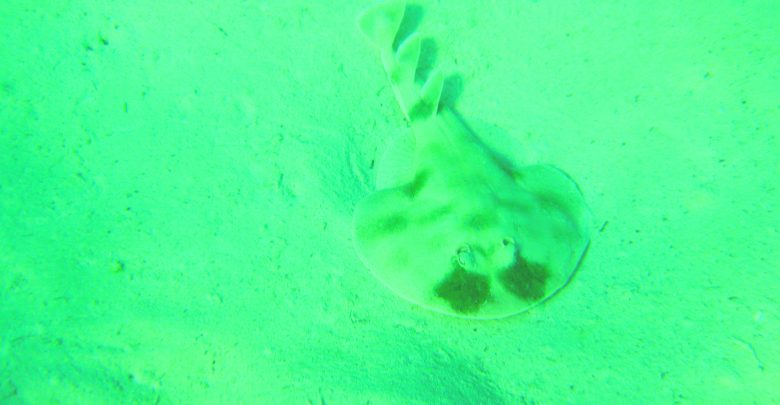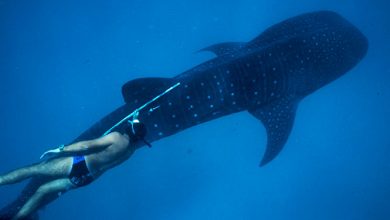Cool Facts Sharks and Rays – Caribbean Electric Ray
This edition, Florencia introduces us to Caribbean rays with electric muscle power

There are over 600 different species of rays distributed over all our oceans – from the giant manta that reaches up to 7 m of width, to a little electric ray of only 15 cm of width. Rays (scientifically called batoids) are related to sharks and share characteristics like a cartilaginous skeleton or internal fertilization. They differentiate from sharks mainly in that rays have a disc formed by the joining of the head and the pectoral fins (those on the side) during embryo development, and their gills are located in the ventral side of the body.
All animals have developed ways to defend themselves from predation, so nature is always a race between eat and avoid being eaten. Rays have a wide range of defense mechanisms: some have a sting or a set of stings on the tail, some are big enough to scare off predators, others have lines of thorns on their bodies, and some have organs that produce electricity.
The Caribbean electric ray also known as the lesser electric ray, is a small brownish ray with a circular body, a short tail and only about 20 cm of width. It is commonly found in the western Atlantic, the Gulf of Mexico, the Caribbean and northern areas of South America. They like shallow waters and are often found in surf zones near beaches or sandbars. These rays can be spotted while snorkeling in Cozumel, Akumal or Mahahual. Although they are not targeted by fisheries, they get caught in the shrimp-trawling fishery and their populations have decreased.
The cool thing about these rays is that they have two kidney-shaped electric organs that have been modified from the gill musculature, located behind the eyes to the end of the body. These organs have cells called electrocytes usually arranged in columns within the electric organ like a row of batteries. There are about 69 species of electric rays that can generate from 8 to 220 volts depending on the species! This small Caribbean electric ray can generate a voltage of 14-37 volts which they use to stun prey and as a defense from predators. So, if you find one while snorkeling, take pictures and admire it, but, as the rule of thumb with any other wild animal, do not touch.







